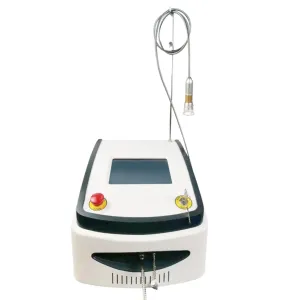The Cutting-Edge Veterinary Laser Machine: Revolutionizing Treatment Options for Pets
Away with
the scalpels and sutures; traditional surgery is a thing of the past for our
pets. A new buzzword in veterinary medicine is laser
machines which are minimally invasive, pain relieving options for pets. Let
us go deeper into how this state-of-the-art technology has changed treatment
approaches for our cherished animals.
Precision Meets Compassion:
Contrasting
the traditional tools, laser machines apply focused light beams to interact
with tissues. This has several benefits for pets:
·
Minimally Invasive:
Laser procedures typically involve reduced incision sizes, which lessens tissue
damage, bleeding and pain. This equates to faster healing times and reduced
post-surgical discomfort for your pet.
· Reduced Risk of Infection: The laser is cutting and sealing blood vessels through
its cauterizing effect thus reducing the chances of infection and promoting
quick recovery.
· Increased Accuracy:
Laser’s accuracy allows for very specific treatments that in turn reduces
damage on the nearby tissue hence improving surgical outcomes.
· Pain Management: Laser
therapy itself has analgesic properties that minimize pain during surgery as
well as afterward. This means that there will be less need for pain medication,
making your pet’s recovery an easy one.
A Spectrum of Applications:
Veterinary
lasers are not only used in surgery but also in various treatments as given
below.
·
Pain Management: Laser
therapy can help relieve chronic pain conditions such as arthritis, hip
dysplasia, and nerve damage.
· Wound Healing: Lasers can
promote cell regeneration and enhance blood supply thereby promoting faster
wound healing and reducing scarring.
· Dental Procedures: Dental
surgeries like gum sculpting; teeth cleaning and root canal procedures need
laser technology to minimize discomfort and bleeding.
·
Skin Conditions: Laser
therapy treats allergies, warts, and other skin conditions with minimal tissue
damage involved.
·
Ophthalmic Surgery:
Delicate procedures such as cataract removals and eyelid corrections are done
using lasers.
Weighing the Options:
Consider in
all aspects of the matter, it is important to look before you leap in this
regard since laser technology has more advantages:
·
Cost: Laser procedures may be costlier
than other traditional methods, but higher healing rates and reduced chances of
contracting diseases could balance out the initial expenses.
·
Availability: Not every
veterinary clinic has laser equipment hence one might have to find a specialized
facility.
·
Pet Suitability: Some
ailments or even sizes of animals may not be appropriate for laser
therapy, so talk with your vet about whether it would work well for your
furry friend.
The Future of Veterinary Care:
Veterinary
laser technology is changing in areas like power control and wavelength
customization making it possible to treat animals more precisely and
effectively. This could improve pet health and welfare through minimally
invasive treatments for a wide variety of conditions.
Caring for pets responsibly means keeping
abreast with developments in veterinary medicine. On the other hand, laser
technology might not be the best answer, but its use can change our
treatment style towards our dear pets. Knowing its pros as well as cons will help
us choose smartly while prioritizing our pets’ life.



Comments
Post a Comment